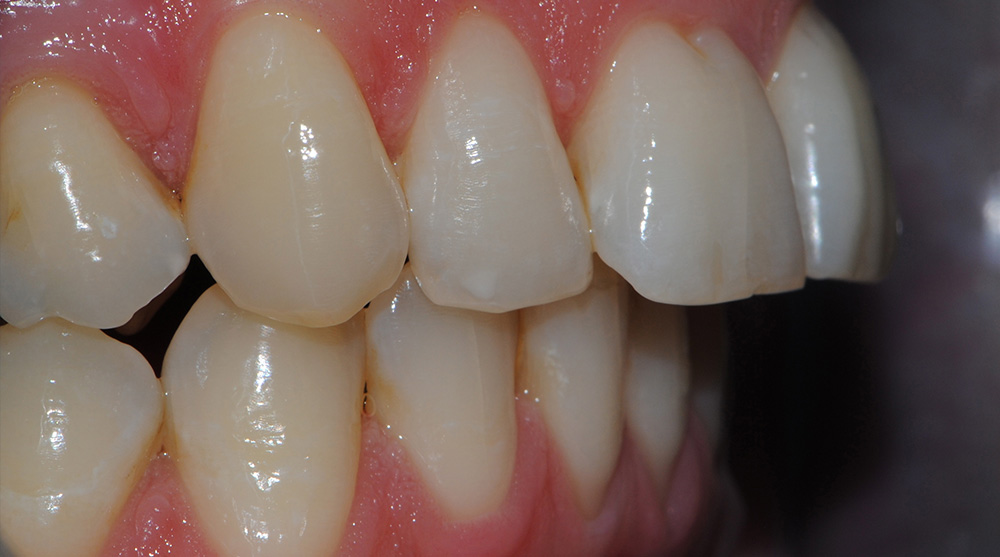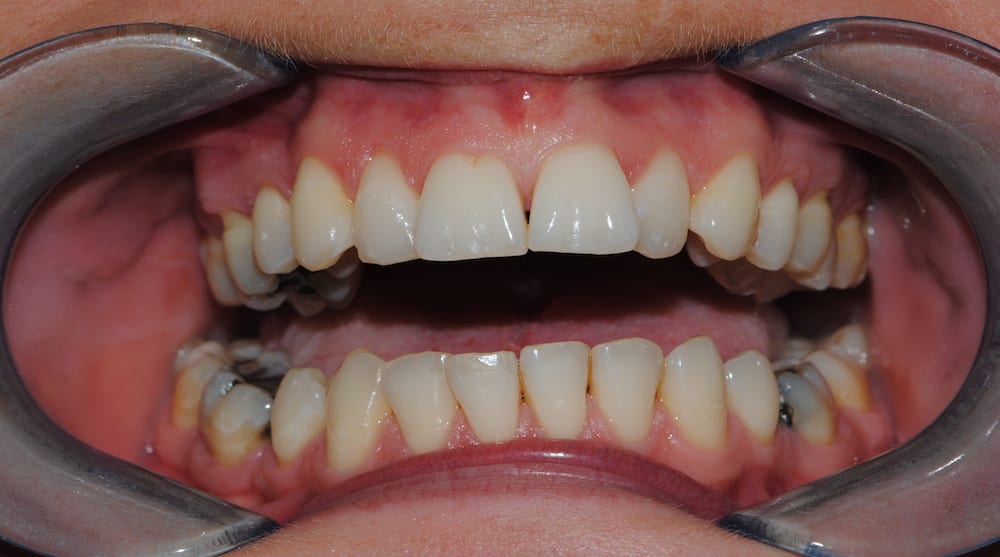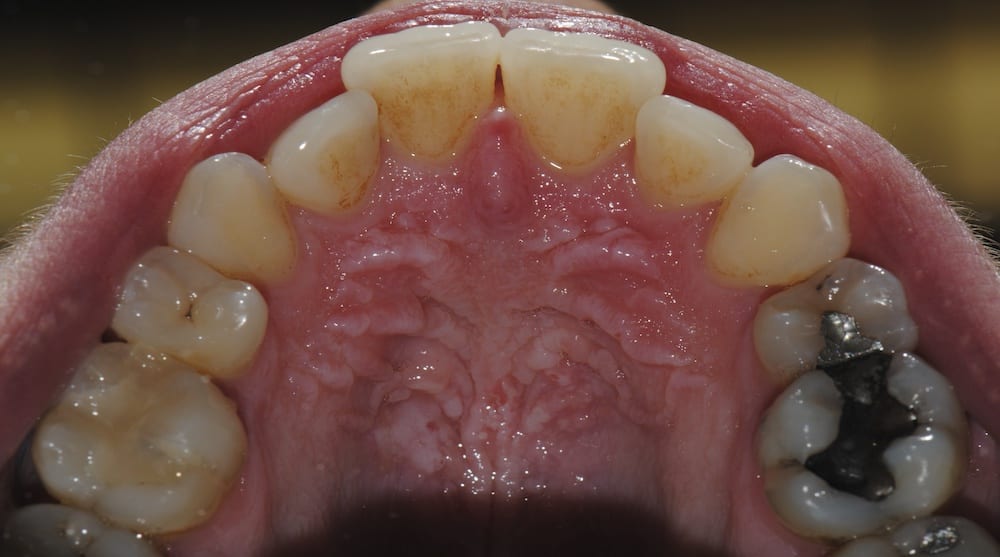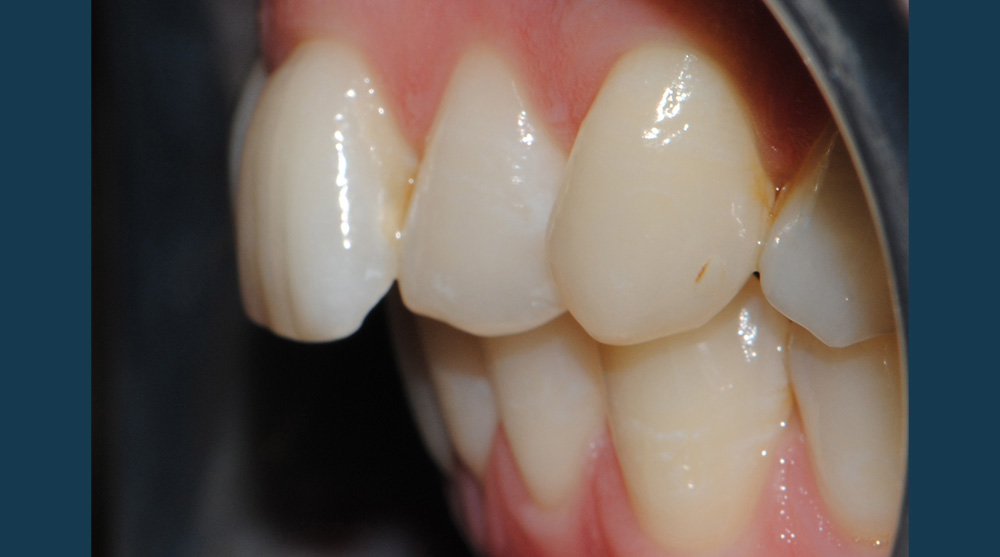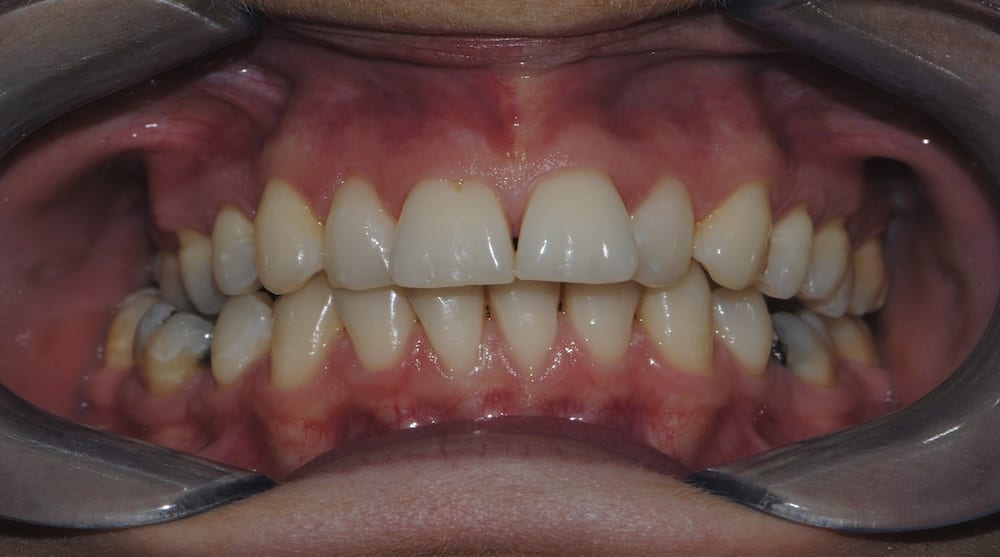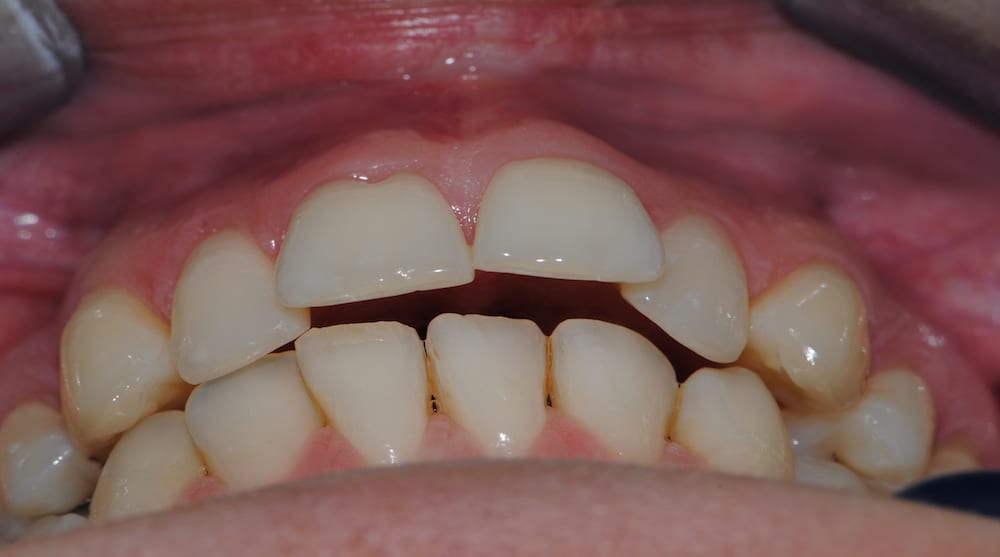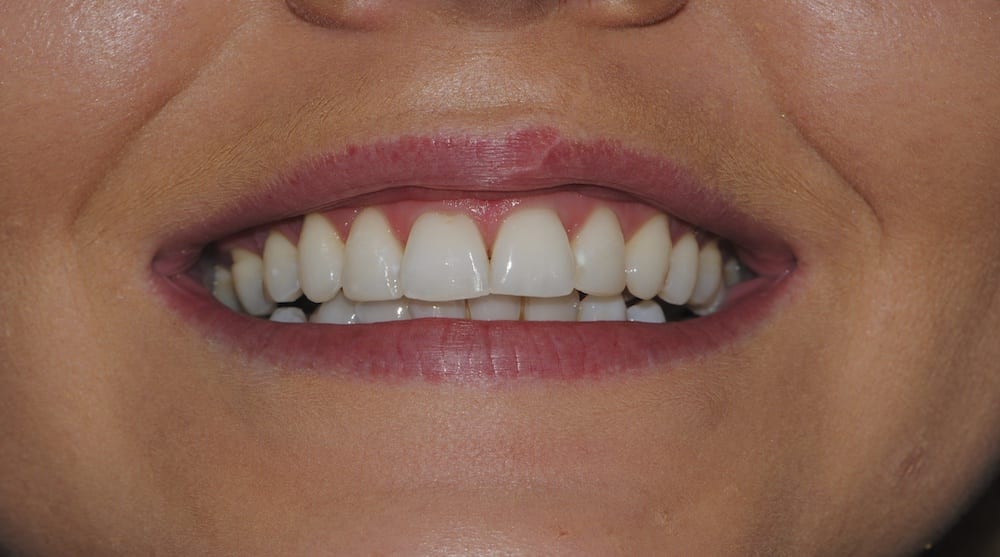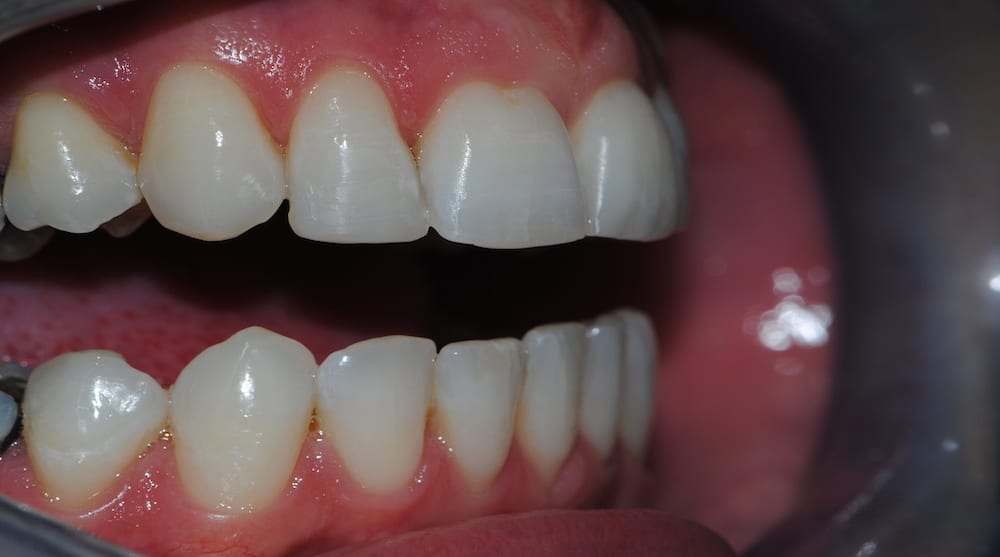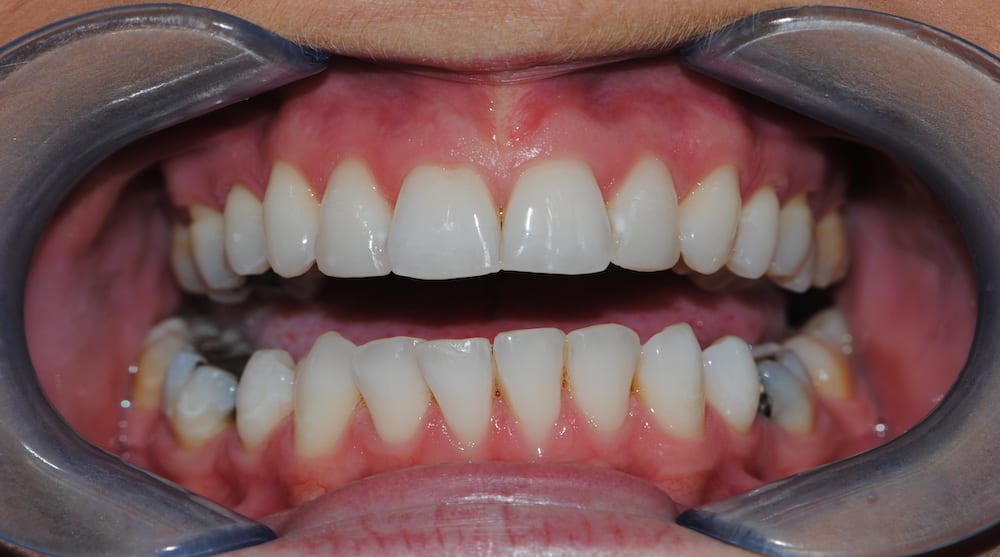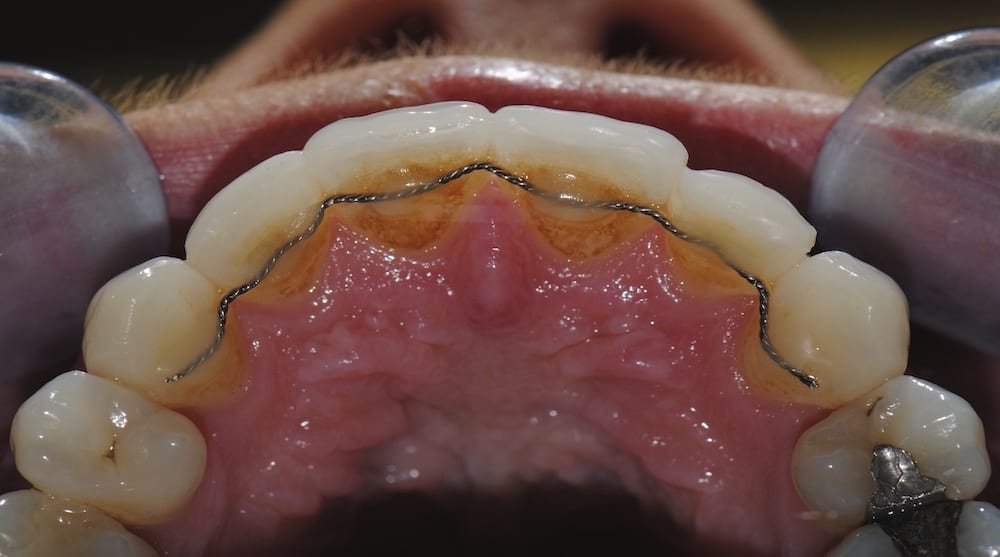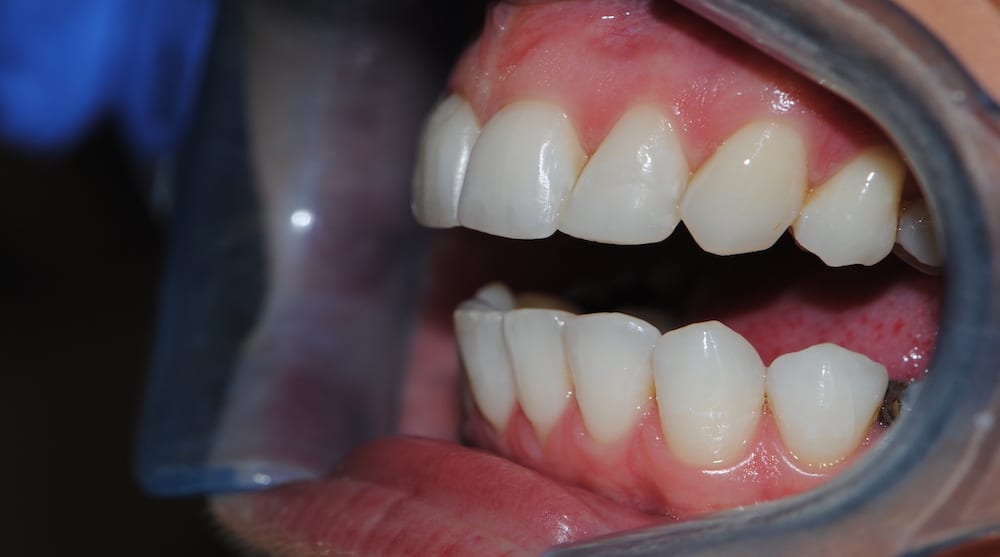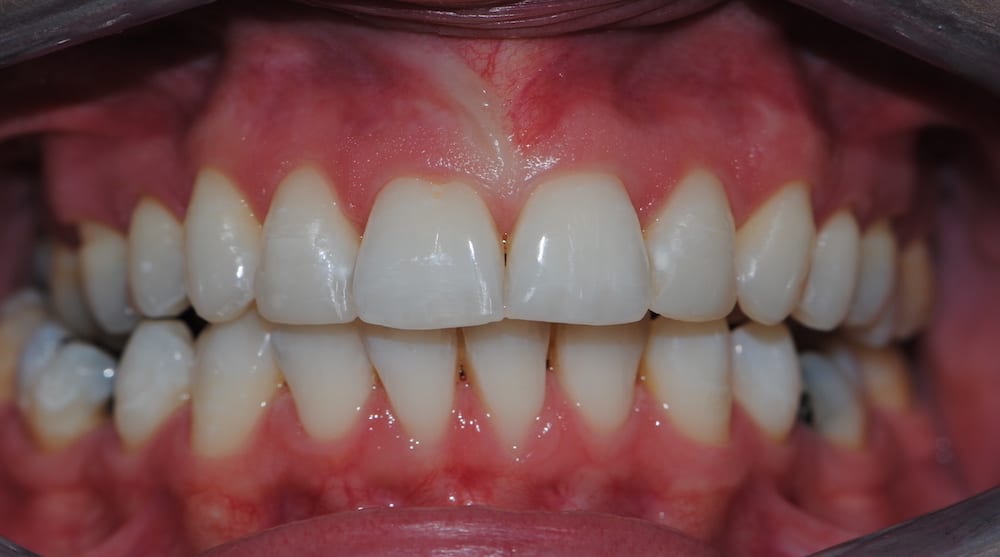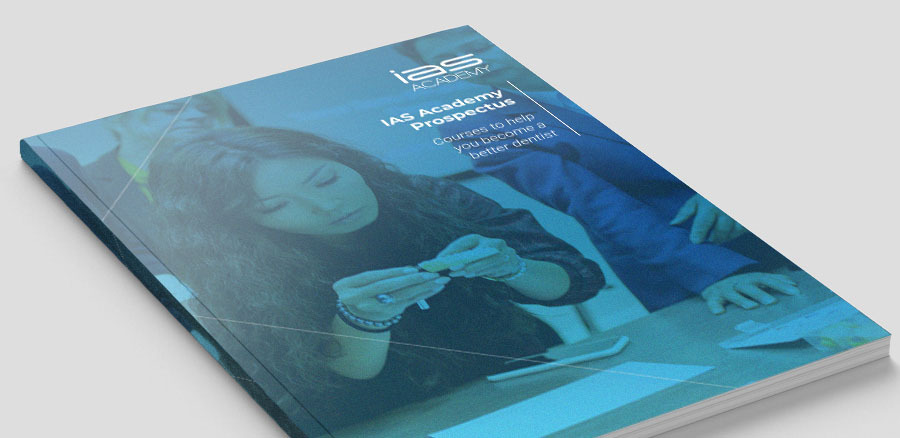Mr Mark O’Rorke from Oldpark Dental Care in Belfast discusses a recent anterior alignment case…
The patient in question was a regular attendee to the practice. She had undergone fixed orthodontic treatment about 10 years previously, but admitted that her compliance with the removable retainers had been poor. The patient presented with concerns that her teeth were moving back to their old position. Her main worry was her upper lateral incisors, which were palatally placed, and she expressed interest in tooth whitening.
The clinical assessment revealed a Class II Div II malocclusion with mild labial segment crowding and palatally placed lateral incisors. An increased overjet was also identified and while the patient was informed that anterior alignment systems would not be able to reduce this, she was unconcerned by it. The palatally placed laterals were the only feature she wished to address.
She had moderately restored dentition, competent lips and good oral hygiene as well as being medically fit and healthy. Secondary caries were detected on the UL6 and the patient was advised that treatment would be required before any orthodontic therapy could proceed. The shade of the anterior teeth was also assessed and found to be A2 on the Vita shade guide.
All treatment options were discussed in detail including their advantages, disadvantages and risks. These options included:
- Direct porcelain veneers
- Referral to a specialist orthodontist for gold standard fixed appliances, SS or cosmetic options also discussed
- Removable appliances such as the IAS Inman Aligner
The patient returned to the practice a month later after considering her options and decided to go for IAS Inman Aligner. She had concerns over enamel removal for direct veneers and wasn’t keen on undergoing fixed appliance therapy again. She also had a friend who had been treated with an IAS Inman Aligner who was really pleased with the result.
From here, clinical photographs were taken along with study models to aid in treatment planning. Digital callipers were used to measure the width of the central incisors and the Spacewise+™ online arch evaluation software was used to assess the degree of crowding and ensure it was a suitable case for the appliance. It suggested a total of 2.88mm of IPR, bringing it within the limits of the IAS Inman Aligner and confirming its suitability. All clinical photographs were uploaded to the IAS Academy online forum for further advice and support.
Following patient consent and final confirmation to proceed from the forum, the IAS Inman Aligner was fitted and 0.96mm of interproximal reduction (IPR) was performed, as per the lab instructions. Some predictive proximal reduction was also completed distally on the central incisors and mesially on the lateral incisors using discs, following the lab guidelines once again. Composite anchors were placed palatally on the lateral incisors, as close to the incisal edge as possible.
The patient practised inserting and removing the appliance herself until she was comfortable with it and all relevant oral health and maintenance advice was reiterated.
Subsequent review appointments were arranged every two weeks. Progress was very good and the patient was delighted to watch the position of the teeth change. IPR was performed as necessary during each session and no problems were reported by the patient.
During the third appointment, the lateral incisors had achieved the desired position and the composite anchors were removed. New labial composite anchors were placed on the distal aspect of the UL1 in order to de-rotate it slightly.
Once alignment had been achieved, all remaining anchors were removed and upper PVS and lower alginate impressions were taken for the permanent retainers. The patient was advised to continue wearing the IAS Inman Aligner as a retainer in the meantime.
The permanent retainers were later fitted using etch, Optibond Solo and flowable composite (Revolution). Upper and lower alginate impressions were taken for the bleaching trays. The patient used a home whitening kit with Philips Nightwhite 16% carbamide peroxide for 3-4 weeks.
Once the teeth had reached a shade B1, composite bonding was performed on the upper lateral incisors using Venus Diamond Shade B1 and finished/polished with Sof Lex discs to optimise the aesthetics. Photographs were once again taken to record the final outcome.
The patient was absolutely delighted with the result. She no longer avoids smiling in photographs and has received lots of compliments from her friends and family. For me, it was a very rewarding and enjoyable case. It is a pleasure to be able to offer an ethical and minimally invasive way to achieve a great outcome.


